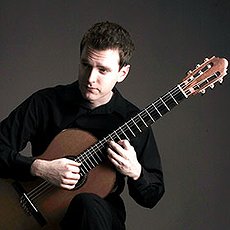Flamenco is a type of Spanish dance accompanied
by the guitar. The music is passionate and alluring and when
performed it can be electrifying. This is such an intense beautiful
art form. Learn to play Flamenco guitar today and change your life
with one of our great flamenco
guitar teachers!
Flamenco Guitar Lessons in Toronto
Flamenco features virtuoso guitar playing, dancing, and gypsy singing. Our Flamenco guitar lessons in Toronto will move you! The dance like rhythms and beautiful accompaniments are so much fun to play on the guitar. A Flamenco guitar is similar to a classical guitar. Both guitars have nylon and plastic strings and both guitars are quite similar in appearance. That being said, the body of a Flamenco guitar is thinner than a classical guitar. The strings on a Flamenco guitar are positioned lower than that of a classical guitar creating a lower action. Some Flamenco guitars have tap plates on the guitar that protects the guitar body from the guitarist's finger nails. Classical guitars do not have tap plates since it would impede the classical guitar's overall sound. The difference between Flamenco guitar technique and classical guitar technique is the hand position. Flamenco guitar players tend to play with their picking hand on more of an outward angle closer to the bridge than classical guitarists. Try our Toronto Flamenco guitar lessons today!
Flamenco Guitar Lessons for Kids
Our beginner Flamenco guitar lessons are extremely fun. Learning to play dance like rhythms on the guitar is a blast. Children can start learning to play Flamenco guitar as young as six years old. In terms of technique, we like to start off our beginner Flamenco guitar lessons with the free stroke (tirando) since it is the most fundamental technique of them all. The free stroke is the basis of all other Flamenco guitar techniques. Once guitar students are comfortable with the free-stroke they can then start learning to play the rest stroke (picado). At this stage a good exercise is to combine both rest stroke and free stroke by using the thumb (pulgar) to play rest strokes while the other fingers play free strokes. The Flamenco pulgar requires a different right hand posture than the free stroke technique so you are ultimately working on two different hand positions. From there, Flamenco guitar students can begin learning Flamenco guitar tremolo using a five note five finger pattern: P i a m i. This is a good start for Flamenco guitar lessons for kids. Not only do we teach Flamenco guitar lessons for kids we also teach Flamenco guitar lessons for adults.
Private Flamenco Guitar Lessons
Private Flamenco guitar lessons in Toronto at Neighbour Note are also challenging. Flamenco guitar music can require a great deal of skill to play. For this reason it's imperative that Flamenco guitar students get a solid foundation in Flamenco guitar technique. Learning arpeggios is a must for any Flamenco guitar student. Many Flamenco guitar pieces have arpeggios in them. When learning to play arpeggios, Flamenco guitar students will also learn a technique called 'planting' for practising. Some of the Flamenco guitar techniques Flamenco guitar students will learn are the: Alzapua, Rasqueado, Abanico, Apagado, Apoyando, Arrastre, Golpe, Ligado, Picado, Tapado, Tirando, and Flamenco Tremolo. The alzapua is a technique that is unique to Flamenco guitar. Here you use your thumbnail like a pick playing in both directions. The rasqueado is a Flamenco guitar strumming technique played by flicking the strings with the pinky, ring, middle, and index fingers successively. Sometimes the thumb is included at the end of this strum technique. The abanico requires mobility in the wrist for speed of the picking hand. The abanico is a picking hand triplet rasqueado technique where the following finger sequence occurs: middle and ring fingers play together in a strong downward strum followed by a second strum with a down stroke and then up stroke of the thumb. The apagado is a Flaemco guitar technique where chords are muted quickly by damping the strings with the pinky finger of the fret-board hand or the palm of the picking hand. The apoyando is simply a rest stroke played using the thumb. The arrastre is a Flamenco guitar picking hand technique where the ring finger rakes across the strings from the highest pitch to the lowest pitch. The golpe is a tap of the body of the guitar played with the ring finger below the thinnest string or with the thumb above the thickest string. The ligado is a slur technique (hammer-ons, pull-offs...). The picado is simply a rest stroke usually played with the index and middle fingers of the picking hand. The tapado is when the guitar is played like a percussion instrument while the strings are being dampened with the fret-board hand. The tirando is simply the free stroke. Flamenco tremolo is both a Flamenco and classical guitar technique. To find Flamenco guitar lessons near me please check our guitar lessons page.







